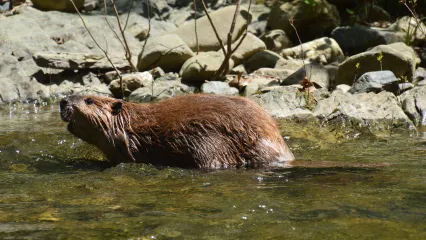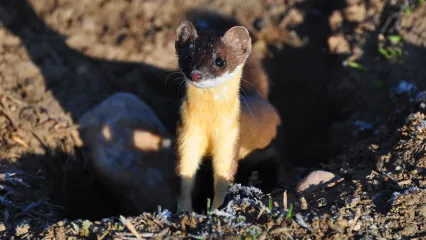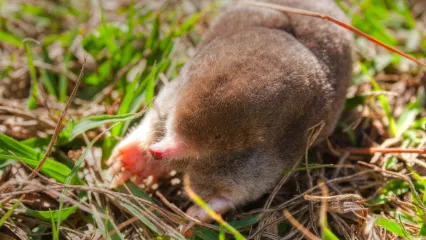
Description
The American beaver (Castor canadensis) is common across Oklahoma. It is one of two extant beaver species; the other is the Eurasian beaver. The beaver is the largest rodent in North America. They live a semiaquatic life, meaning they inhabit the land and water equally. Beavers are dark brown mammals with webbed hind feet to help them swim. They have a broad, scaly flat tail.
They have poor eye sight but have keen senses of hearing, smell and touch. Many people are aware of the beaver's large teeth, a characteristic for which they are recognized. A beaver's teeth grow continuously, so as they chew wood their teeth will not be worn down. Beavers have long, strong claws used for digging and have great dexterity for folding leaves and twisting small twigs off trees.
Beavers are slow on land but are great swimmers and can stay underwater for some time. Beavers do not hibernate. They store sticks and logs in piles in their habitat and eat the underbark throughout the winter months. Their lips close behind their teeth, allowing the beaver to swim with building materials and food without drowning. Favorite foods of the beaver that are found in Oklahoma include cottonwood, willow, and johnson grass roots. But they will eat almost any type of bark, leaf or root.
Size
Beavers continue to grow throughout their lives. An adult beaver can weigh from 35 to 65 pounds. Females are as large or larger than males of the same age which is not common among mammals. Beavers can live more than 20 years in the wild.
Habitat
Beavers are also known for their natural activity of building dams on rivers and streams. These dams, constructed of downed trees and brush, serve as a way to maintain the water level in their living areas. They use their ever-growing teeth to chew down mailer trees and other plants for building and for food. They create large piles of sticks and trees, called lodges, for their living quarters. Their dams create wetland habitat for waterfowl and other wildlife.
Life Cycle
Beavers are monogamous and produce one litter each year, usually in spring. A typical litter contain up to four newborns called "kits". Families usually grow to consist of two adults and three or four kits altogether.
How To Observe
American beavers like to keep to themselves and seem to constantly be working, which gave rise to the popular phrase "busy as a beaver." They can hold their breath up to 15 minutes during a dive so keep an eye out for them to resurface. When a beaver is in danger or frightened, it will give an alarm signal. When swimming, the frightened beaver forcefully slaps the water with its paddlelike tail before diving deep. The slapping tail makes a loud noise that is heard above and below the water alerting other beavers in the area. Nearby beavers will then dive into the water.


